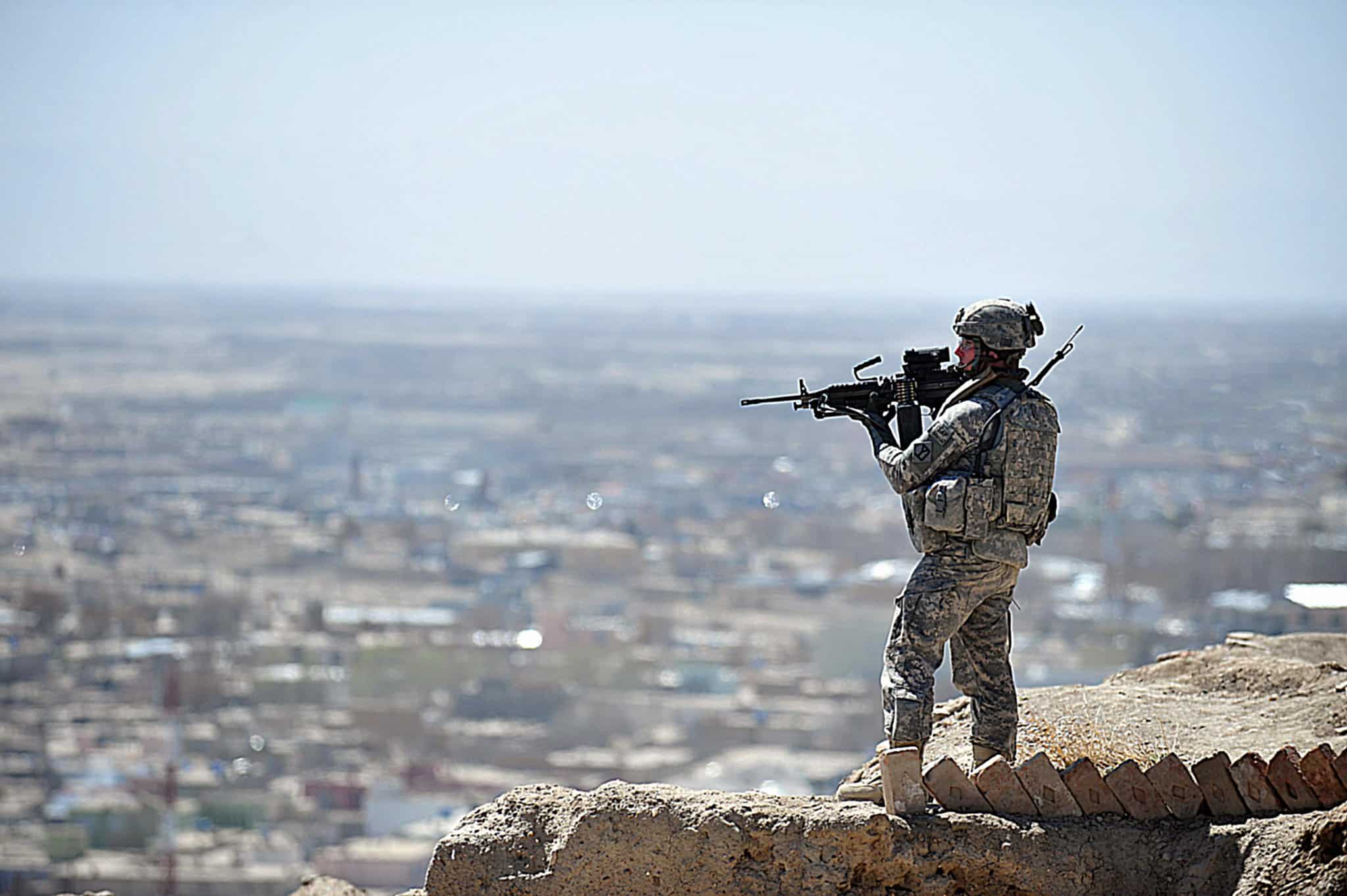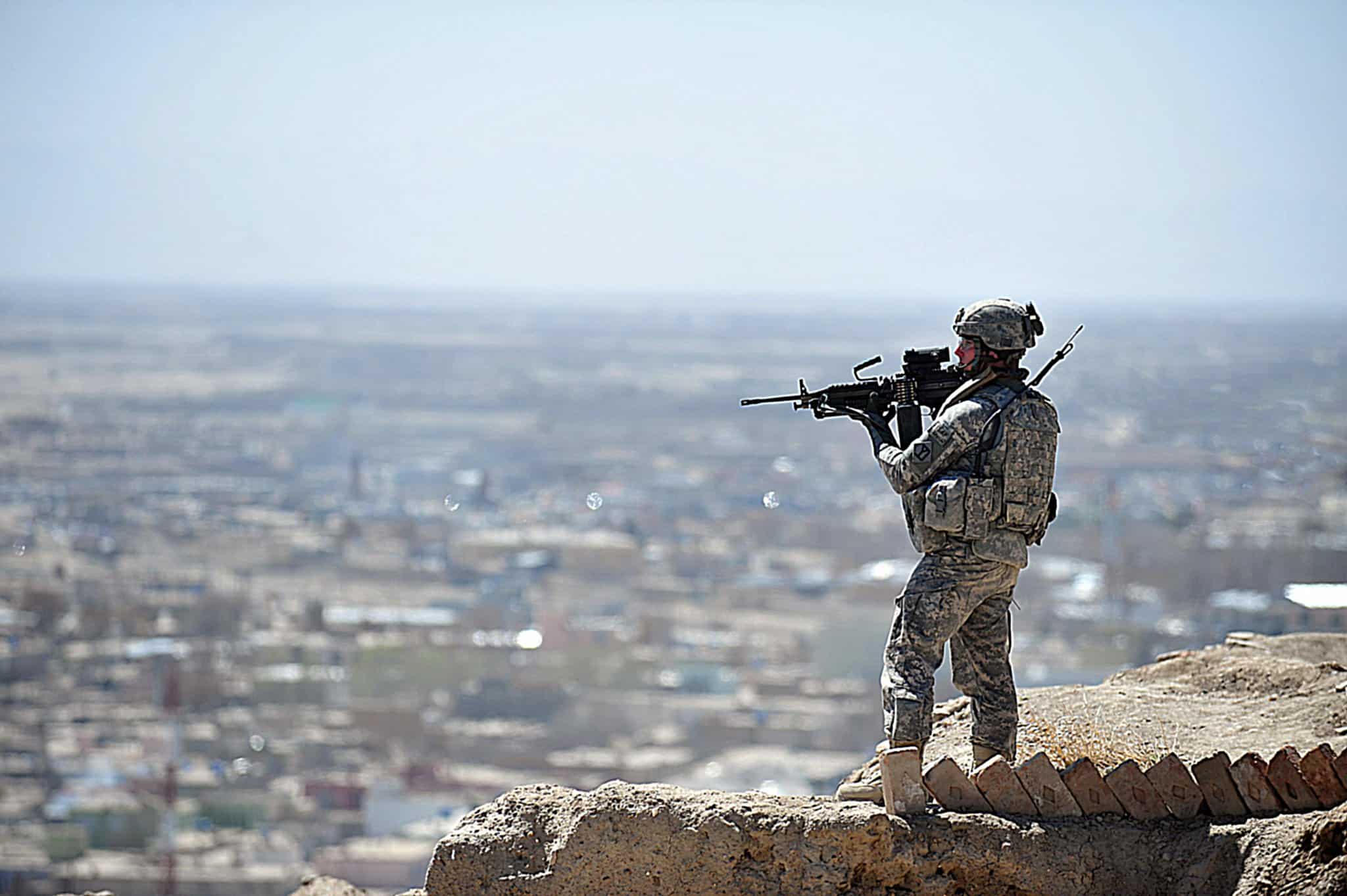
In Afghanistan on 24 July, a Taliban suicide bomber killed forty people in the centre of Kabul, just four days after a US airstrike killed 16 Afghan policemen in Helmand Province. Both incidents of slaughter were terrible and highlighted the US State Department official warning that “Travel to all areas of Afghanistan remains unsafe due to the ongoing risk of kidnapping, hostage taking, military combat operations, landmines, banditry, armed rivalry between political and tribal groups, militant attacks, direct and indirect fire, suicide bombings, and insurgent attacks, including attacks using vehicle-borne or other improvised explosive devices. Attacks may also target official Afghan and US government convoys and compounds, foreign embassies, military installations, commercial entities, non-governmental organization offices, restaurants, hotels, airports, and educational centres.” Is there anything left that isn’t under threat of destruction?
This is official recognition by Washington that Afghanistan is a catastrophe. It could not be made plainer that the place is a hellhole of unlimited shattering violence. It is also terminally corrupt, and if the grief-stricken families of the dead policemen ever receive the compensation or pension due to them it will be a miracle. Out of 176 countries, Transparency International places it at 169 in its corruption index.
Two days after the US-NATO slaughter of Afghan policemen it was announced that Médecins sans Frontières, or Doctors without Borders — known as MSF — had “reopened a small medical clinic in the Afghan city of Kunduz — its first facility there since US air strikes destroyed a hospital it ran in 2015.”
MSF is a saintly organisation whose doctors, nurses and support staff “provide assistance to populations in distress, to victims of natural or man-made disasters and to victims of armed conflict.” They do so “irrespective of race, religion, creed or political convictions,” but on 22 October 2015 the MSF hospital in Kunduz was destroyed by a series of US airstrikes.
It was reported that about 2 in the morning “a blast ripped apart the intensive care unit, where patients included two children. It was the start of around an hour of airstrikes on the buildings, and strafing attacks on doctors, patients and staff desperately seeking shelter in corners of the compound. As the attack planes returned again and again, and the hospital collapsed and burned, MSF staff inside the hospital, in Kabul and in the United States put in frantic calls to contacts in the US military from Afghanistan to Washington DC», but the hellish massacre continued for over two hours. In her eye-witness account, Australian Doctor Kathleen Thomas said ”Our colleagues didn’t die peacefully like in the movies. They died painfully, slowly, some of them screaming out for help that never came, alone and terrified, knowing the extent of their own injuries and aware of their impending death. Countless other staff and patients were injured; limbs blown off, shrapnel rocketed through them, burns, pressure-wave injuries of the lungs, eyes and ears. Many of these injures have left permanent disability. It was a scene of nightmarish horror that will be forever etched in my mind.”
As to the people who planned and executed (literally) and failed to stop this slaughter — how can they sleep at night?
The sixteen dead policemen killed by the US airstrike on 20 July had nobody to record their brief but hideous shrieking terror as missiles blasted their tiny outpost. The US National Public Radio, NPR, the most reliable source of news in America, but listened to by very few people, reported that “the US Marines guiding the strike Friday afternoon in Gereshk district thought the men gathered in the compound were Taliban, not police.” Well, how wonderful.
What happens to the real-time intelligence gathered in Afghanistan by drones and the circling Bombardier Global 6000 electronic warfare aircraft? (Almost all internet reference to the Bombardier Afghanistan programme has been deleted, but you can find its tracks on Flight Radar if you’re patient.)
Here we have a country whose 2017 budget included an allocation of $53.5 billion for the National Intelligence Programme “which includes funding requested to support Overseas Contingency Operations.” Over fifty billion dollars have been spent on staggeringly advanced intelligence systems that can’t tell if a group of Afghans are police or militants.
One reason Afghanistan is so important is that the war there has lasted over fifteen years and been the direct cause of colossal numbers of deaths and refugees. There are over two million Afghan refugees in Pakistan alone, and over a million “internally displaced persons,” almost all of whom have had their lives disrupted beyond recovery. The slaughter has been dreadful, and it is time it stopped.
US and British forces invaded Afghanistan at the end of 2001 and were joined by the rest of the countries in the NATO military alliance in August 2003. NATO was desperate to find some justification for survival, as there was (and is) no reason for its continuing existence, so Brussels eagerly latched on to the war in Afghanistan. US-NATO embraced another dozen or so nations that sent a few soldiers to Afghanistan, naming the organisation the International Security Assistance Force, and after exactly fourteen years, NATO has achieved precisely nothing. The slaughter continues, by both sides, and, as the State Department tells us, “travel to all areas of Afghanistan remains unsafe.”
Afghanistan is the world’s largest producer of heroin. Not only that, but there are now over three million heroin addicts in the country, thanks to the explosion in drug production after the US invasion. When I first visited Afghanistan, in 1993, the number of addicts was inconsequential, in spite of the Western hippy legacy. Poppy growth was expanding because it was profitable, but then the Taliban forbade it. As reported by the New York Times in May 2001, “The first American narcotics experts to go to Afghanistan under Taliban rule have concluded that the movement’s ban on opium-poppy cultivation appears to have wiped out the world’s largest crop in less than a year… The American findings confirm earlier reports from the United Nations drug control program that Afghanistan, which supplied about three-quarters of the world’s opium and most of the heroin reaching Europe, had ended poppy planting in one season.” But now we’re back to normal.
Few people remember that in May 2001 the United States announced ”a $43 million grant to Afghanistan in additional emergency aid to cope with the effects of a prolonged drought. The United States has become the biggest donor to help Afghanistan in the drought.” The US Secretary of State declared that “’We will continue to look for ways to provide more assistance to the Afghans, including those farmers who have felt the impact of the ban on poppy cultivation, a decision by the Taliban that we welcome.”
The rabid hypocrisy of the Western world was evinced in the NYT’s fatuously sententious observation that “American experts and United Nations officials say the Taliban are likely to face political problems if the effects of the opium ban are catastrophic and many people die.”
Mandated by the United Nations, NATO-ISAF’s primary objective was “to enable the Afghan government to provide effective security across the country and develop new Afghan security forces to ensure Afghanistan would never again become a safe haven for terrorists.”
There is no effective security in the country. As reported by the UN Assistance Mission in Afghanistan, the Taliban “continue to contest district centres, threaten provincial capitals, and temporarily seize main lines of communication throughout the country, especially in high-priority areas like Kunduz and Helmand provinces.” The last two being, not coincidentally, the regions in which US airstrikes killed so many innocent people.
National Intelligence Director Dan Coats told the US Senate on 11 May that “The intelligence community assesses that the political and security situation in Afghanistan will almost certainly deteriorate through 2018, even with a modest increase in military assistance by the United States and its partners.” So what’s the point in carrying on?
The disastrous Trump has no knowledge of military strategy or international politics, or very much else, but even he must be able to understand that the war in Afghanistan is unwinnable by the forces of the corrupt, incompetent Kabul government backed by the hated foreigners whose fifteen years of interference have been a disaster.
In October 2005, I wrote that “The insurgency in Afghanistan will continue until foreign troops leave, whenever that might be. After a while, the government in Kabul will collapse, and there will be anarchy until a brutal, ruthless, drug-rich warlord achieves power. He will rule the country as it has always been ruled by Afghans: by threats, religious ferocity, deceit, bribery, and outright savagery, when the latter can be practiced without retribution. And the latest foreign occupation will become just another memory.” The foreigners should leave as soon as possible.
Cloughy is a British and Australian army veteran, former deputy head of the UN military mission in Kashmir, and Australian defense attaché in Pakistan.
Reprinted with permission from the Strategic Culture Foundation.

